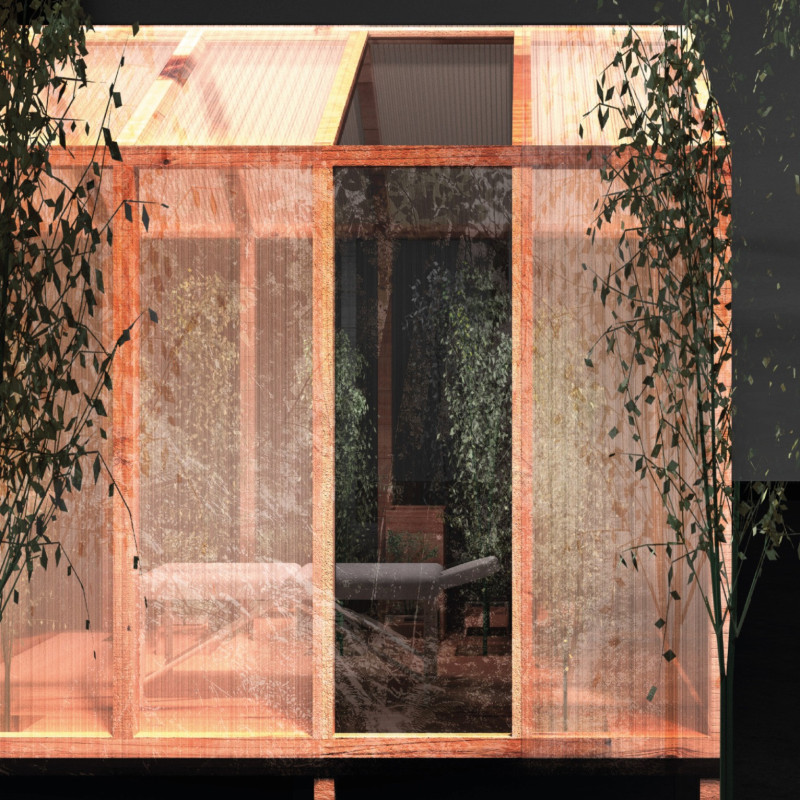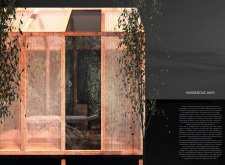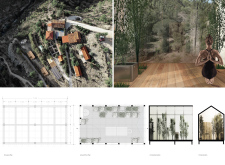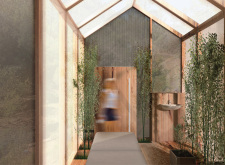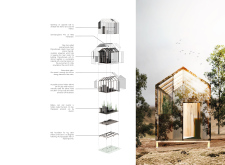5 key facts about this project
The design prioritizes transparency, featuring expansive glazing that blurs the lines between indoor and outdoor environments. This approach not only enhances natural lighting but also creates a visual connection with the vast greenery around it. The gabled roof contributes to the cabin's welcoming silhouette while ensuring effective natural ventilation. The layout is intentionally modular, allowing for flexible use of space while maintaining aesthetic appeal.
Sustainable Materials and Innovative Features
"Indigenous Hues" employs a range of sustainable materials that reflect both environmental responsibility and aesthetic simplicity. Key components include clear twin-walled polycarbonate sheets for roofing and walls, which provide thermal insulation and diffuse natural light throughout the interior. Locally sourced timber forms the structural framework, delivering warmth and integrating the building with its natural surroundings. Photovoltaic glass components are used to promote energy efficiency, while recycled metals are integrated into details such as frames and hardware, ensuring the project's overall ecological footprint is minimized.
The design also incorporates a pad foundation that adapts to varying topographical conditions, which allows for a stable base regardless of the terrain. This element of the structure is critical for preserving the integrity of the design while facilitating user comfort.
Spatial Organization and User Experience
The interior of "Indigenous Hues" is designed to enhance user experience through thoughtful spatial organization. The layout can accommodate diverse activities conducive to relaxation and introspection, such as yoga sessions and quiet contemplation. Strategic placements of indoor greenery contribute not only to aesthetic appeal but also to improved air quality, creating a harmonious ambiance.
The emphasis on biophilic design within the project reinforces a connection to nature and encourages occupants to engage with their surroundings. Elements such as large windows and open spaces further amplify this relationship, providing visual access to the natural environment outside and fostering a sense of peace.
For an in-depth understanding of the architecture and design of "Indigenous Hues," readers are encouraged to explore the project presentation. Elements such as architectural plans, architectural sections, and architectural designs offer valuable insights into the design methodologies employed and the innovative architectural ideas that shape this engaging project.


